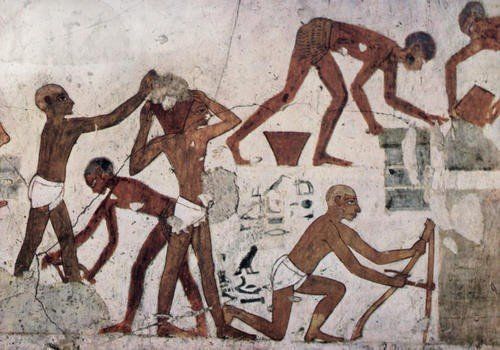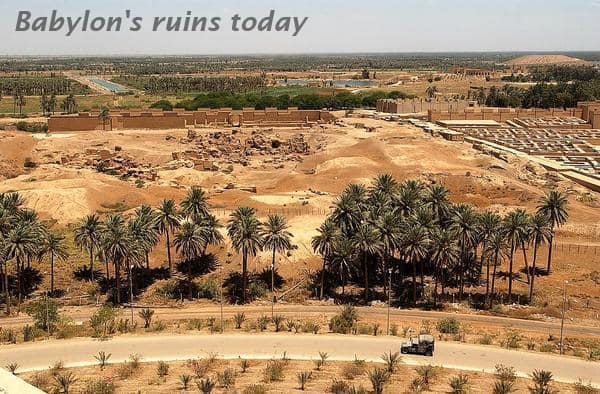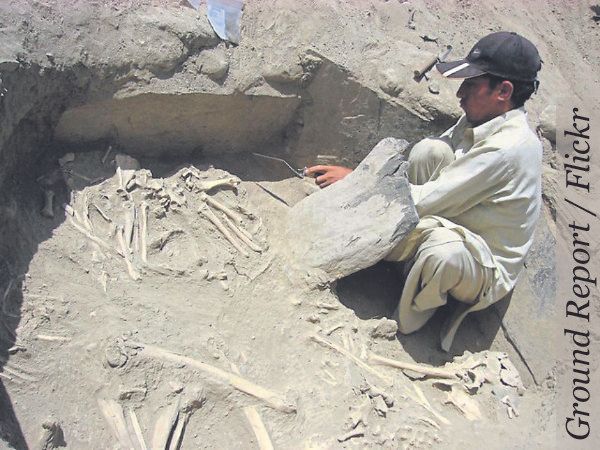Archaeology is a young discipline. Little serious archaeology was done before the nineteenth century, but as western nations extended their empires, whole new worlds opened up.
At first, the cultures of Egypt and of ancient Mesopotamia – today’s Syria, Iraq and Iran – were studied for their own sake.
But it soon emerged that some rulers and civilisations could be identified with names mentioned in the Bible. In these archeological records, names of kings of Israel and Judah, as well as biblical place names, began to appear – confirming that the Old Testament record was history, not myth.
At the same time, Sir William Ramsey – who excavated in Asia Minor (Turkey) – confirmed much of the history of the Gospel of Luke and the Acts of the Apostles. Biblical archaeology had come to birth.
It was once fashionable to claim that ‘gaps’ in the archaeological record cast doubt on the historical accuracy of the Bible. But today, the painstaking accumulation of 200 years of archaeology proves otherwise.
Durable rubbish
Ancient civilisations built their towns on the rubble – and often with the rubble – of previous cities. Whatever the earlier people left behind – building materials, pottery, jewellery, utensils, weapons and even their bones – were covered over and preserved for later generations to unearth.
It is this ‘durable rubbish’ that helps the archaeologist date each layer of an ancient city. The mountain of earth that betrays the presence of an old city is called a tell, an Arabic word for ‘mound’.

This word is found in Bible cities like Tel-melah and Tel-harsha (Nehemiah 7:61) and Tel-abib (Ezekiel 3:15). Authenticity breathes through the biblical text.
Historical fact
The historical reality of places and civilisations referred to in the Bible has been confirmed by archaeology. Here are some examples.
In 1813, Claudius Rich, of the British East India Company in Baghdad, was digging around in Babylon, a city frequently mentioned in the Bible. He published his findings in his massively popular Memoir on the Ruins of Babylon.
The Frenchman Paul Botta excavated the city of Khorsabad in 1843, and found the fabulous palace and library of Sargon II (Isaiah 20:1).
Two years later a young English diplomat, Austin Layard, uncovered Nimrud (Genesis 10:8-11, where it is called Calah). At Nineveh (Genesis 10:11, etc.) he also discovered the palace of Sennacherib, with its famous Lachish wall-relief room.
This discovery generated much excitement, confirming as it did an event from the Bible (2 Kings 18:13-14).
Between 1835 and 1837 Henry Rawlinson deciphered the Assyrio-Babylonian language, allowing George Adam Smith, in 1876, to publish Babylonian stories of creation and a great flood.
In 1894 Smith published his ground-breaking Historical Geography of the Holy Land.

The growing number of discoveries prompted a fresh examination of the Bible to discover more about the nations surrounding Israel.
Grave robbers
The earliest ‘archaeologists’ were grave robbers, plundering ancient royal tombs for valuables. One notable example took place at the tomb of Cyrus, King of Persia (Ezra 1:1).
In 530 BC Cyrus died on a military campaign. A magnificent tomb was built for him at Pasargadae (Iran).
The tomb was approached by a seven-stepped platform and above the entrance was inscribed: ‘O man, whoever you are and whenever you come – for I know that you will come – I am Cyrus, who gave the Persians their empire. Do not grudge me this patch of earth that covers my body’.
Unfortunately, his request was ignored! When Alexander the Great climbed the steps to inspect the tomb in 322 BC, he discovered that the robes, jewellery and scimitar of Cyrus were gone. The stone coffin was shattered and his bones lay all over the floor.
Fortunately, modern scientific archaeologists show far more respect and care. We can take their finds seriously.

Jesus Christ
Although many discoveries mirror the times of Jesus Christ, no personal artefacts relating to Jesus have come to light. This is just as well, since otherwise they might have been worshipped rather than Christ himself.
No amount of digging can provide evidence of an astonishing event like the birth of a Saviour. But we do have God’s Word, the Bible, to tell us what happened and why.
Archaeology certainly confirms the accuracy of the biblical record wherever it touches it – but the trustworthiness of the Bible rests on different criteria.
What evidence is there? The evidence of changed lives today!
The apostle Paul wrote to some early Christians: ‘You are a letter from Christ delivered by us, written not with ink but with the Spirit of the living God, not on tablets of stone but on tablets of human hearts’ (2 Corinthians 3:3, ESV).
The person who believes in Jesus – as the Son of God, sin-bearer and Saviour – becomes a living proof that the message of the Bible is true.






